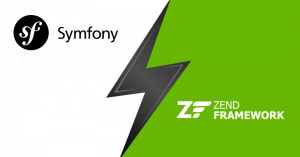Leveraging Firebase Development Platform for Business Growth
Do you know about Firebase? Let me tell you here!
It appears as though there’s an application for everything nowadays. Indeed, nearly everything. I haven’t discovered an app that causes me to expel affected earwax. It is happening with me some of the times, and it’s excessively offensive. But, somebody could manufacture it! I’ll add to your Kickstarter.
In case you’re the venturesome kind of individual that handles humanity’s earnest needs with a mobile application, you’ll need to think about Firebase. Firebase is Google’s mobile application development platform that encourages you to manufacture, improve, and become your application.
As an organization (ChromeInfotech), bunches of customers are coming to us and asked about the best development platform for their software and the right wireframing for their mobile application. They generally have groups of inquiries and perplexities as the main priority. I am continually directing them with the best arrangement that encourages their business to become quicker.
We are the leading AngluarJS mobile app development company, and we have proficient’s product designers who have abilities and experience to play with Firebase.
Our high-end developers have experience in building Progressive Web Apps as well. If you need to create a POA for your product, contact us.
If you are thinking to convey your application in Firebase Development platform, you can connect with us. I can ensure Your thought, and our innovativeness will shake the market.
So let me proceed with the article now!
Here it is again in bigger letters, for effect:
Firebase is Google’s mobile application development platform that encourages you to manufacture, improve, and become your application.
What’s more, presently you recognize what Firebase is. In principle, this blog entry should be possible!
Firebase is Beyond the marketing copy
I have blended emotions when somebody asks me “What is Firebase?” (which happens a ton, since I chip away at it). From one perspective, I’m happy to know there’s an advantage! Much obliged for inquiring!
Even though, there’s such a significant amount to it, where do I at any point start? The definition above is precise. However, it’s not entirely sure by any stretch of the imagination.
I like retro games, so I’ll try to clarify Firebase with an image:
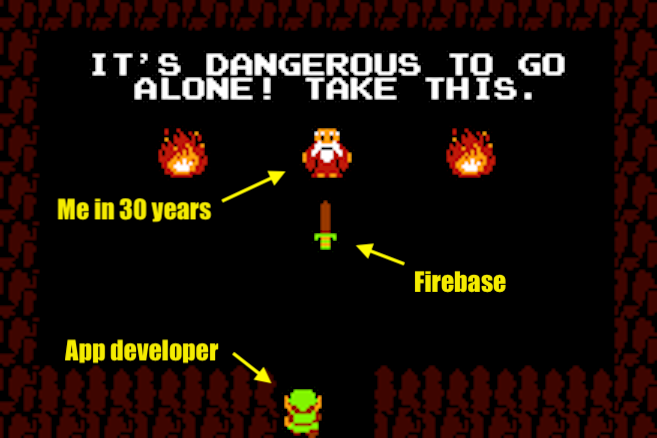
This makes a great deal of sense — if you are me! In any case, I comprehend that vast numbers of you are not me, so I’m sad if that didn’t support you.
In all seriousness (for the rest of this section), Firebase is a toolset to “fabricate, improve, and become your application,” and the devices it gives you spread an expansive bit of the services that designers would regularly need to assemble themselves.
But, would prefer not to construct
since they’d preferably be concentrating on the application experience itself. This incorporates things like investigation, validation, databases, design, document stockpiling, push informing, and the rundown goes on.
The services are hosted in the cloud and scale with almost no exertion concerning the designer.
When I state “hosted in the cloud,” I imply that the items have backend parts that are entirely kept up and worked by Google.
Customer SDKs furnished by Firebase collaborate with these backend benefits specifically, with no compelling reason to build up any middleware between your application and the service.
In this way, in case you’re utilizing one of the Firebase database choices, you regularly compose code to inquiry the database in your custom application.
This is not quite the same as customary application development, which commonly includes composing both frontend and backend software. The frontend code conjures API endpoints uncovered by the backend, and the backend code takes the necessary steps.
In any case, with Firebase items, the current backend is avoided, putting the work into the customer. The Firebase comfort gives reliable access to every one of these items.

Firebase
Firebase | You can make your backend evaporate!
In case you distinguish as a “backend engineer,” you may hear this and believing that your activity is being disposed of! “OMG, no more backends — now I need to learn front-end development!”
This isn’t valid, as certain things essentially should be on the backend for an assortment of reasons.
Firebase perceives this and offers an approach to do some backend development, where it bodes well for the application you take a shot at. Along these lines, don’t stress, your activity is protected, and I’ll speak increasingly about this later on.

As a result of how Firebase items work, a few people may consider Firebase a “platform as a service” or a “backend as a service.” I’ve never honestly felt happy with wedging Firebase entirely into one of these crates.
Google beefs up the Firebase platform for enterprises. (I know, this announcement doesn’t help clarify what Firebase is, which should be the motivation behind this article!)
Anyway, at the season of this composition
I include 17 unique items in the Firebase suite. Here’s another useful picture:

It’s said that words generally can’t do a picture justice. I added 37 in the image, including two things that are not words.
It turns out; you’re in karma today since I’m going to attempt to go through the other figurative 963 words in this article to help clarify that image somewhat better. But, I’m not going to check them.
Also, if you need to discover what Firebase isn’t, well, you’ll need to peruse as far as possible of this post. No skirting ahead! You’ll miss every one of the jokes!
What kind of applications is Firebase useful for?
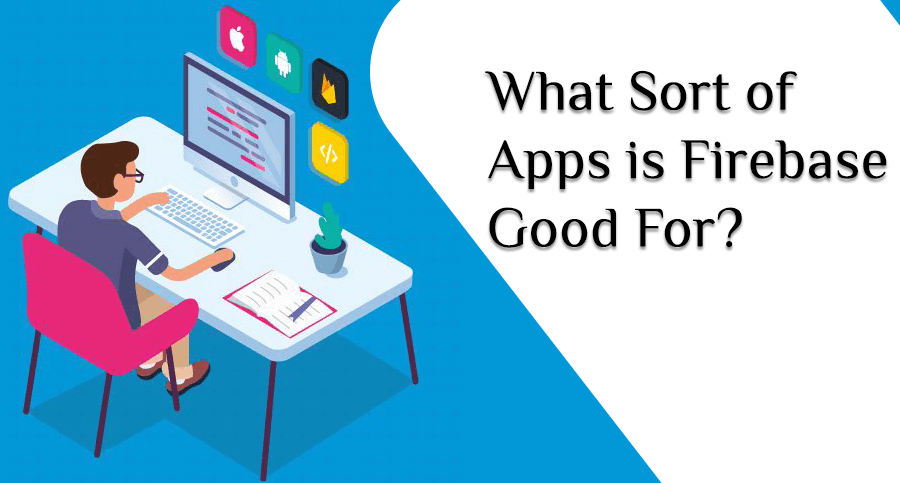
There’s no restriction to the kinds of applications that can benefit from outside assistance by Firebase items. There are just cutoff points to the platform it tends to be utilized on.
iOS and Android are the essential focuses for the Firebase SDKs, and there’s expanding support for web, Flutter, Unity, and C++.
You ought to likewise know there’s an Admin SDK accessible for an assortment of dialects, to be utilized with any backend parts you may require.
Over those SDKs, there’s a library called FirebaseUI (Android, iOS, web) that gives a bundle of accommodating utilities to make development with Firebase much less demanding.
What’s more, there are likewise activities, for example, AngularFire that wrap the web SDKs for use with Angular. These are open source. Firebase likes open source.
Fabricate your app — creating the “guts.”
The “fabricate” gathering of items are these:
- Authentication — user login and character
- Real-time Database — real-time, cloud-hosted, NoSQL database
- Cloud Firestore — real-time, cloud-hosted, NoSQL database
- Or, Cloud Storage — massively mobile record stockpiling
- Cloud Functions — “serverless,” occasion driven backend
- Firebase Hosting — global web facilitating
- ML Kit — SDK for standard ML assignments
Firebase Authentication deals with getting your clients signed in and recognized. This item is fundamental to understanding a portion of other items arranged appropriately, particularly in case you have to limit access to per-client information (which almost every application will need to do).
What’s exceptional about Firebase Authentication is that it makes it simple to perform secure logins, which is unfathomably hard to execute effectively alone. What’s more, it’s “unified,” or, in other words, that the United Federation of Planets energizes its utilization.
This is what the Federation’s Captain Picard considers
You need to actualize your auth framework:

Others may state that “unified personality” implies that you can connect a client’s records from the different character suppliers (Facebook, Twitter, Google, GitHub) into a single file on Firebase Authentication. In any case, I like my definition better.
In any occasion, I unequivocally suggest learning Authentication and incorporating it into your application first, which will ideally incite you to consider the security of per-client information that you may store utilizing a portion of the other “form” gather items.
Firebase Real-time Database and Cloud Firestore give database services. I recorded them both as “realtime, cloud-hosted, NoSQL databases.”
They have unique qualities and shortcomings, and you may need to do some examination to make sense of which one is better for your necessities.
Indication
Begin with Cloud Firestore, as it likely tends to a more significant amount of your needs (and it’s likewise hugely mobile). You can utilize it is possible that one or both together if that suits your application.
It’s significant that Firestore is, in fact, a Google Cloud item, not a Firebase item. For what reason is it recorded with Firebase?
Firebase adds SDKs to use in your mobile application to make direct information get to conceivable, evacuating the requirement for that troublesome middleware part. There are different items recorded here with a comparable association with Google Cloud, which I’ll additionally note.
What’s uncommon about these databases is that they give you “constant” updates to information as it changes in the database.
You utilize the customer SDK to set up an “audience” at the area of the information your application needs to use, and the audience gets summoned with that information over and over, each time a change is watched.
This gives you a chance to keep your application’s presentation crisp, without surveying the information of intrigue.
Fun Fact:
Real-time Database was the first “Firebase” before it joined Google in 2014. Right up ’til today, individuals still conversationally (however inaccurately) allude to Real-time Database as just “Firebase.” But you shouldn’t do that since it’s off-base.
Cloud storage gives enormously mobile record stockpiling. It’s additionally, in fact, a Google Cloud item, not a Firebase item. With Cloud Storage for Firebase, you get customer SDKs to use in the application that empowers you to transfer and download records straightforwardly to and from your Cloud Storage “pail.”
Authentication works incredibly well with these three items with the utilization of security rules (for Realtime Database, Firestone, and Cloud Storage) that you can use to set access control to your information at the source.
This guarantees customers can get to that information just in the manners in which you permit, keeping away from the unexpected circumstance with the lolrus above.
Clients signed into an application with Authentication will consequently give a recognizable proof token that you can use in your tenets to ensure who can peruse and compose which things of information.
In this way, if you store individual information about your clients, unquestionably use Firebase Authentication with security standards to restrain and fit. You may even get a delicate update from Firebase if your guidelines show up excessively tolerant.
Cloud Functions is one more a Google Cloud item that functions admirably with other Firebase and Cloud items.
Utilizing the Firebase SDKs for Cloud Functions
You can write and send code, running on Google “serverless” framework, that naturally reacts to occasions originating from other Firebase items. It’s hard to believe, but it’s true; it’s serverless!

At the point when individuals state “serverless,” they don’t recommend an absence of servers. With a serverless backend design, there are still servers in play; you don’t need to think a lot about them.
Don’t worry, look after, scale, or do any of the devops required in a customary (or “server,” my oath) engineering. You compose and convey code, and Google wraps up.
Cloud Functions for Firebase is the one result of the whole Firebase suite that makes them compose backend code.
As I would like to think, a few sorts of code ought to keep running in a controlled backend condition. What’s more, you ought to give those backend devs an occupation, due to that guarantee I made before.
Now let me talk about Firebase Hosting.
Firebase Hosting is a protected, worldwide web facilitating CDN (Content Delivery Network). It’s excellent at rapidly conveying static substance (HTML, CSS, JS, pictures) utilizing servers that are near your clients.
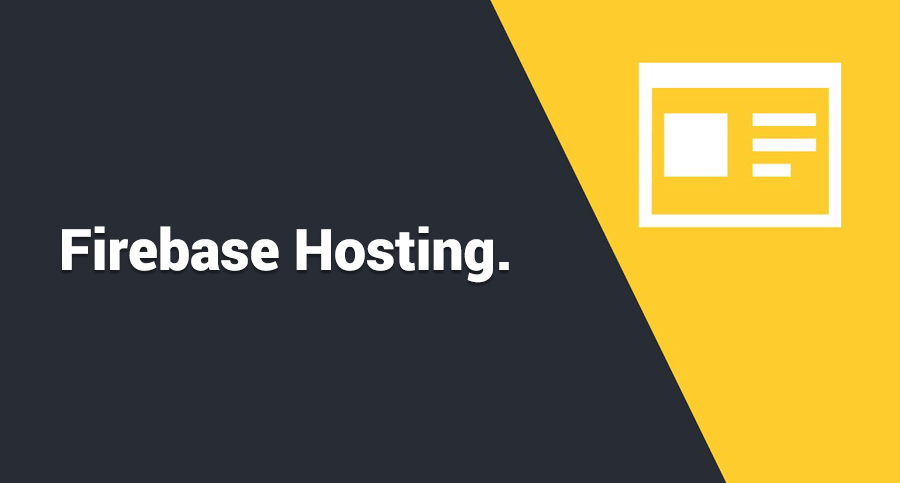
Also, you can get it set up rapidly, with or without your custom area, alongside a provisioned SSL declaration that costs you nothing.
Firebase Hosting has one critical purpose of coordination with whatever remains of Firebase, and that is through Cloud Functions. Firebase Hosting lets your intermediary the demand and reaction to and from Cloud Functions when composing HTTP type capacities.
Furthermore, shockingly better, it’ll store the reactions from your capacities, if you arrange them appropriately. What an incredible method to construct a “Relaxing” API!
ML Kit for Firebase gives you a chance to exploit an abundance of AI mastery from Google, without knowing anything about ML. This is extraordinary for me since I don’t know anything about ML!
In any case, what I escape ML Kit is the capacity to perceive things that my gadget camera catches, for example, content, appearances, and tourist spots. What’s more, it can take a shot at my cell phone with exceptionally constrained figuring power.
For those of you with a further developed comprehension of ML (once more, not me), you can transfer a TensorFlow model for progressively modern use cases. The guide for AI items at Firebase will be ultimately “combined”:
Grow your app — attract and hold clients
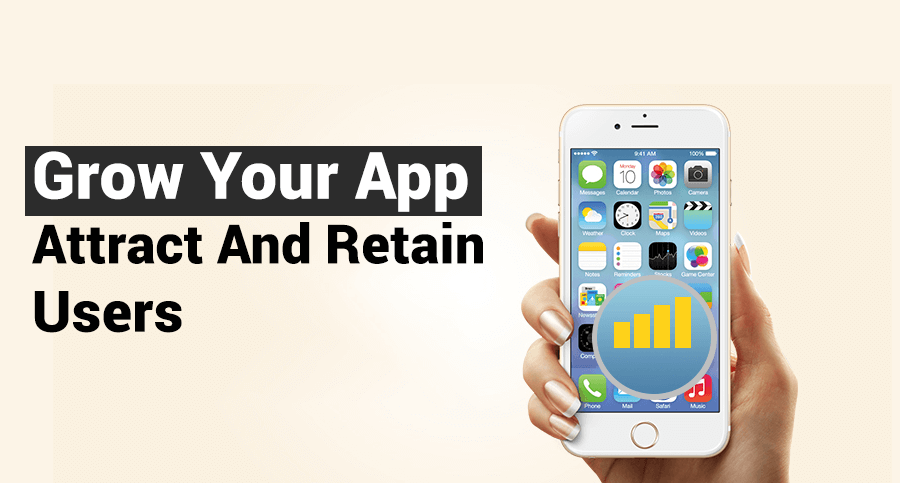
The “develop” gathering of items are these:
- Analytics — understand your clients, and how they utilize your application
- Predictions — apply AI to the investigation to anticipate client conduct
- Cloud Messaging — send messages and warnings to clients
- Remote Config — customize your application without conveying another form; screen the progressions
- A/B Testing — run promoting and ease of use trials to perceive what works best
- Dynamic Links — enable local application changes, client sharing, and advertising efforts
- App Indexing — re-draw in clients with Google Search mix
- In-App Messaging — engage your dynamic clients with focused messages
Google Analytics for Firebase is the center of the “develop” advertising. In case you have to realize your clients better, and how they make utilization of your application, Analytics can demonstrate to you that.
When you distribute an application out of the blue, you may have a thought who your client base will be, the place they live, and how they may utilize your application.
Furthermore, those thoughts may be wrong! The best way to know without a doubt is to gather information, and that is the place Analytics makes a difference.
There’s route more to Google Analytics for Firebase than can be abridged here. However, there’s one critical thing to know, and that is the idea of –
“Crowd of People.”
A crowd of people is a gathering of clients who have taken some predefined activities in your application, share some client properties, or have essential gadget qualities.
You characterize the prerequisites for somebody to wind up an individual from a group of people, and Analytics will make sense of which clients have a place with it, by breaking down the flood of occasions that your application creates after some time.
This idea of a crowd of people division is incredible because you can focus on that group of onlookers with other Firebase items in the “develop” class. Remember this idea of gathering of people as you read on!
Let me tell you What Firebase Prediction is?
Firebase Predictions expands over the information gathered by Analytics to make forecasts (no curve balls there) about which clients in your application are probably going to stir (not open your app), and which will burn through (cash, on your application).

These two new classifications of clients are somewhat similar to Analytics gatherings of people, aside from you aren’t required to adequately characterize how a client winds up in one of these gatherings.
This is the enchantment of AI!
It’s much the same as the enchantment of the Sorting Hat from Harry Potter, except nobody fusses about getting arranged into Hufflepuff.
Examination and Predictions are both intriguing, yet they don’t generally do anything for your application. But, when you group them up with other Firebase “develop” items, you can accomplish enchanted outcomes! How about we perceive how that functions.
Now, Let me Tell You!
What Firebase Cloud Messaging is?
Firebase Cloud Messaging gives you a chance to convey push messages to show something relevant to your application, or the client of your application. There are two different ways to communicate something specific.
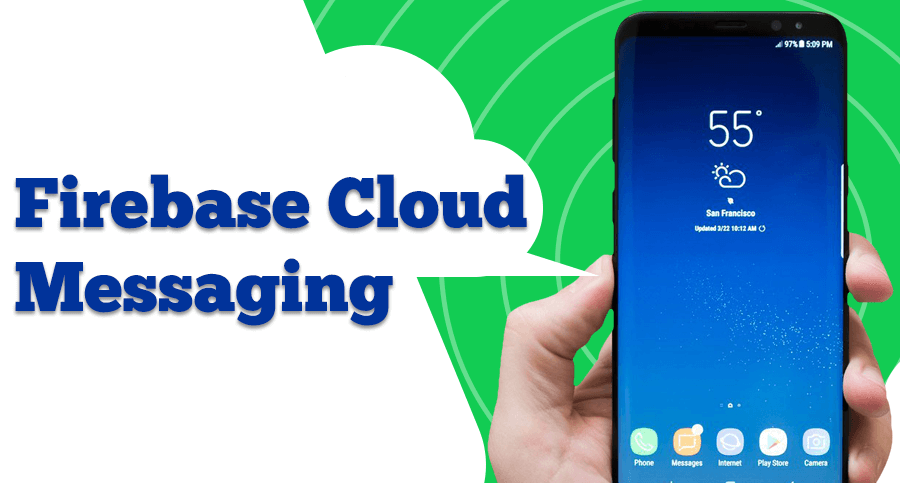
To start with, you can compose code on your backend to ping your application when something gets refreshed that your application should need to react to (for instance, a visit room notice).
Second, you can form a message in the Firebase support to ping your clients with data of intrigue. It’s the second case — direct client notifications — that I’m progressively inspired by today.
One thing you can do with client informing since it’s incorporated with Analytics and Predictions makes an impression on individuals from a specific Analytics crowd or Predictions gatherings.
This is profitable because you can target clients with data that they’re bound to be keen on and click on, keeping them connected with your application. Focusing on a particular gathering with important substance is superior to merely shoot messages to everybody.
Here is Firebase In-App Messaging
Firebase In-App Messaging encourages you to show focused on, adjustable words to your clients to draw in with key highlights of your application. You may ponder “well, how is this unique about FCM?” (And I’m so happy you inquired! It implies despite everything you’re focusing!)
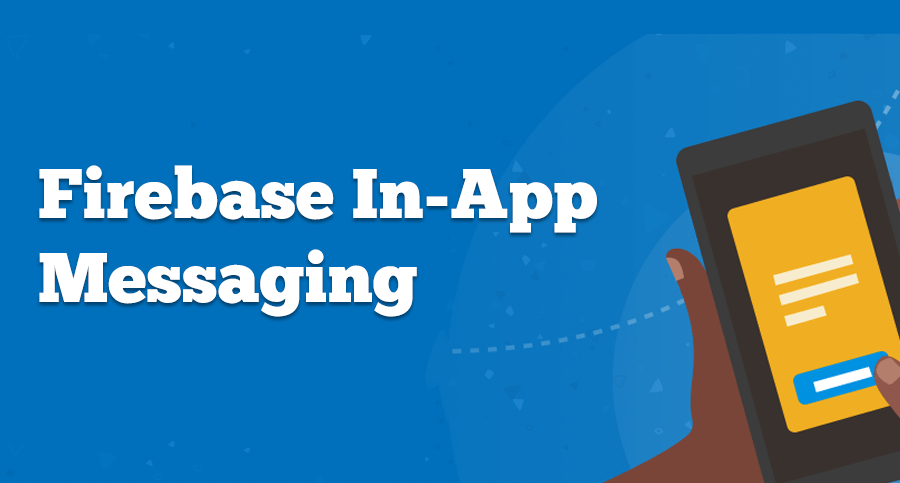
The critical contrast here is that messages from FCM start from a server you control (counting the Firebase reassure), while letters from FIAM begin from inside the application itself (however designed in comfort).
The message is destined to be shown while your client is utilizing the application. However, FCM and FIAM are indistinguishable in that they’re both profoundly coordinated with Analytics and Predictions.
It’s altogether conceivable that a message sent by FCM won’t bear some significance with the client, as a result of its planning or importance, or it was even unintentionally rejected. Also, did you see that furious looking lady above with the low resistance for push informing?!
With FIAM, the message is conveyed at the exact second it winds up significant, given criteria you characterize, controlled by the client’s conduct as estimated by Analytics occasions and Predictions gatherings.
After this, i am going to tell you –
Firebase Remote Config
Firebase Remote Config gives you a chance to roll out unique developments to your application’s conduct and appearance without distributing a refresh to your application.
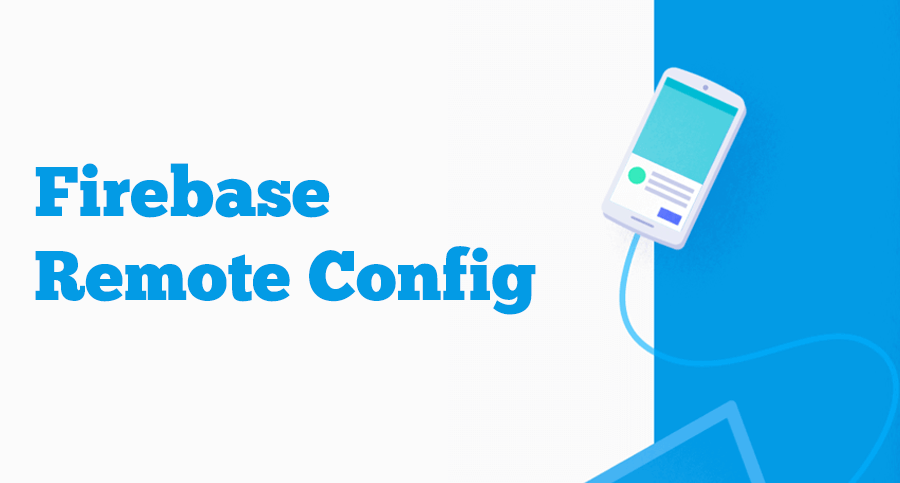
The general thought with Remote Config is that you characterize a group of design parameters in the Firebase reassure. At that point, your application utilizes an SDK to intermittently bring those qualities and make utilization of them as required.
You can consider Remote Config as sort of like a monster set of cloud-hosted key/esteem sets. This may seem like a primary database. However, there’s undeniably more you can do with it than you may at first envision.
The way that Remote Config sparkles are through its capacity to characterize conditions for every parameter. One kind of situation gives you a chance to target specific qualities to explicit Analytics groups of onlookers.
Another gives you a chance to focus on the Predictions bunches for “agitate” or “spend.” This causes you to execute some important highlights in your application, including giving a high-esteem group of onlookers individuals a top-notch understanding, or inconsistent clients a motivation to remain.
After this, Let me tell you –
Firebase A/B Testing
Firebase A/B Testing takes the tight reconciliation between Analytics, Remote Config, and FCM much further. I envision you’re always making changes to your application that is great.
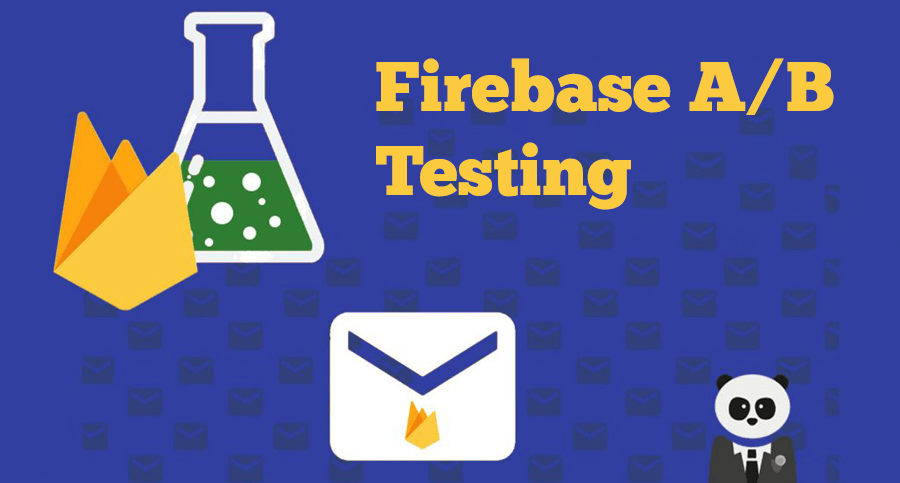
In any case, you most likely don’t know without a doubt early if it will help or damage except if you lead your examinations. If you don’t have those sorts of assets, you can play out your reviews, and back them up with information.
If you can make sense of how to quantify achievement, you can utilize Firebase A/B Testing to set up a test and lead it on a bunch of clients before settling on a choice.
Here is Firebase Dynamic Link
Firebase Dynamic Links expands on the current idea of a “profound connection” that dispatches your request to a specific screen or altered involvement. Profound connections work incredibly if the client as of now has your application introduced, yet they don’t function admirably at all if they need to add it first.

Dynamic connections enhance this by enduring the application establishment process. At the point when the client clicks an active relationship, and the application isn’t now introduced, they’re coordinated to the suitable application commercial center to add it.
At that point, when the client dispatches the application out of the blue, the setting of the connection is held, and the form can begin with the experience that you initially planned.
Goodness and they work crosswise over platform too, so you don’t need distinctive connections for every one of your Android, iOS, and web applications.

That little green buddy down there is indeed not a Dynamic Link. Simply your standard Link.
- Improve your app — stability, and execution
- The “improve” gathering of items are these:
- Test Lab — scalable and computerized application testing on cloud-hosted gadgets
- Crashlytics — get explicit, noteworthy knowledge into your application’s accidents
- Performance Monitoring — gain understanding into your application’s execution issues
Now tell me tell you the FIrebase Test Lab
Firebase Test Lab gives you access to an expansive assortment of iOS and Android gadgets, notwithstanding virtual Android devices, for testing your application. If you assemble applications for cell phones, you most likely have no less than one gadget at your work area for development and testing.
This one gadget positively isn’t illustrative of what your clients are utilizing. Cell phones come in a wide range of sizes, from a wide range of makers, with various forms of the OS in play.
It’s really costly and tedious to attempt to keep up your choice of gadgets, at that point test on every one of them.

Test Lab comprehends this by facilitating an expansive choice of good, physical gadgets that will introduce your application and run your test suite (Android: Espresso, iOS: XCTest) against it.
It likewise can play out a wholly robotized test that requires no extra coding, for the languid among us (which is, similar to us all, amirite?).
After this, let me tell you Firebase Crashlytics
Firebase Crashlytics is the best accident detailing apparatus on the planet. Indeed, it’s the best. I don’t have the foggiest idea for what reason I’m notwithstanding trying to type stuff about it. It’s been around since for eternity. Simply use it.
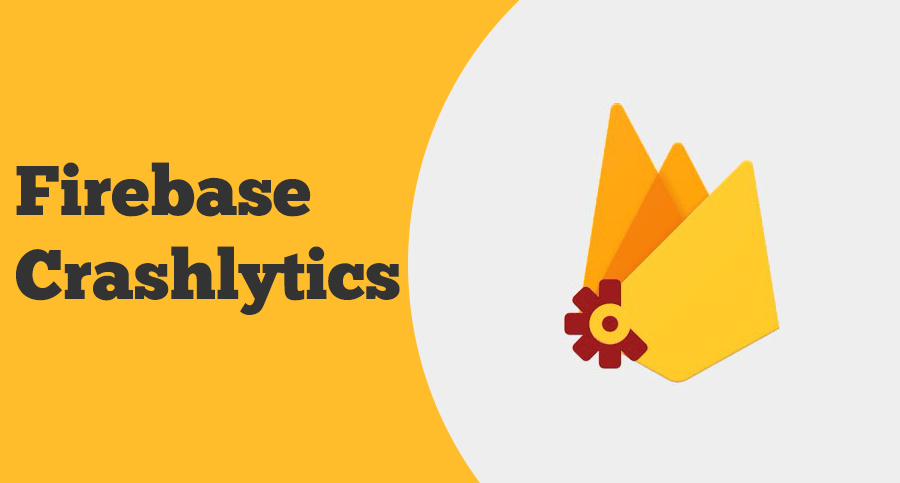
It’s even incorporated with Analytics, so you can quantify how crashes are influencing how clients utilize your application (perhaps by uninstalling it). Application crashes aren’t even entertaining. So I won’t mess with an exciting picture to show an idea that everybody gets it.
Goodness, who am I joking?
Here’s the image.

It’s the final lap! Just a single more item to talk about!
So, now i am going to talk about –
Firebase Performance Monitoring
Firebase Performance Monitoring gives you bits of knowledge into your application’s execution issues, from your clients’ perspective, by estimating its HTTP asks for, startup time, and other code utilizing its API.
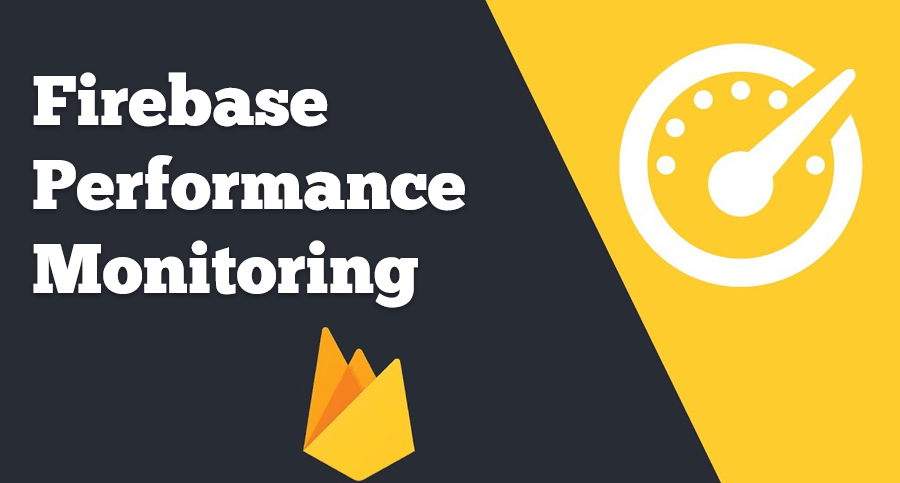
The enchantment in this Firebase item is that it begins estimating the HTTP ask for and startup time without you composing more than two or three lines of code. With the outcomes noticeable in the Firebase comfort. Add a couple of more lines to time whatever else your application may do.
I’ll underscore the significance of getting measurements from your clients’ perspective. You most likely build up your application utilizing quick gadgets on quick wifi systems.
This setup more likely than not isn’t like the conditions that your clients face everywhere throughout the world on flakey mobile systems with low-end gadgets.
In case you need to comprehend the torment that your clients face when utilizing your application. Give pulling a shot your nose hairs with a couple of corroded pincers.
Now you know that was a futile exercise.
Coordinate Performance Monitoring into your application, and concentrate its outcomes in the Firebase support.
You’ll have the capacity to see precisely how tricky your application may be in various pieces of the world. On multiple systems, on a lot of gadgets, with multiple adaptations of the OS.
Also, you’ll see which HTTP endpoints are causing the greatest deferrals in your application — giving you an objective on which to center your developments.

What’s not quickly evident is the way the three items in the “improve” class function admirably together despite the fact that they don’t have linear combinations like those in the other Firebase classifications.
What you can do is run a unique rendition of your application in Test Lab. And when that is done, you’ll have the capacity to see progressively nitty gritty accident data. In Crashlytics (in case it crashes, apparently) and better execution estimations in Performance Monitoring.
I additionally know somebody who could utilize a Crashlytics crash answer to discover an exhibition issue in Performance Monitoring. You can be astute like this as well!
Whew, that was a ton of content and pictures

You made it as far as possible! Prepare to be blown away. You just discovered that Firebase has a great deal of stuff in it. So what do you detract from this? I’ll come it down to a couple of focuses so you can return to building your application:
Firebase is Google’s mobile application development platform.
- You’re going to spare a considerable amount of time and cash utilizing Firebase items. Instead of attempting to manufacture them yourself.
- You can utilize every last bit of it, or none of it, or merely the bits you need.
- All those bits are intended to function admirably together, oversaw in one comfort.
- Are you going to utilize Firebase to fabricate that earwax-busting application as of now?
Addendum: What Firebase isn’t

That is all excellent information up there about what Firebase is. However, it’s become evident that we likewise need a reference for everything that Firebase isn’t. For the record:
Firebase is a platform, not (only) a database (any longer).
- It’s “Firebase,” not “FireBase.” If you compose it that way, you will be punched in the throat.
- Similarly, it’s “Firestore,” not “FireStore,” yet the punch goes to the kidney.
- It’s NEVER contracted FB. Do that, and you’ll be shouted at until your ears drain.
- If Firebase were a component, it would battle fluorine for the image F.
- It’s “continuous,” not “ongoing,” regardless of the proposal of your syntax checker.
- It’s “Cloud Functions for Firebase,” not “Firebase Functions.” Go ahead, look through the docs and refute me. I challenge you.
- It’s “Cloud Firestore,” not “Firebase Firestore.” Seriously, who needs that much flame??
- Cloud Firestore isn’t Cloud Filestore isn’t Cloud Datastore isn’t Cloud Memory store isn’t Cloud Storage. OK?
What’s Missing from Both Real-time Database and Cloud Firestore?
Before you surge off to manufacture your next Firebase application, how about we address a portion of the highlights that neither Real-time Database nor Cloud Firestore at present help.
We referenced that Cloud Firestore improved questioning help, however despite everything it has far to go to rival the inquiry alternatives you’d get in a SQL database structure.
You’ll see that the two platforms don’t take into consideration “not equivalent to” questions.
This implies you’ll be express for any particular esteem you’re searching for or make numerous questions searching for various solitary qualities and joining the outcomes yourself either on the customer or in a Firebase Cloud Function to acquire an equal outcome set.
This is because Firebase needs to keep questions quick, yet it tends to be a torment to manage in case you genuinely need this component in your application.
Another missing local question is a “string containing string”.
This implies you can’t productively look squares of content or halfway match strings in your dataset. You can settle this by presenting an outsider ordering administration like Algolia or ElasticSearch. As prescribed by Firebase, however, that arrangement is a long way from perfect.
Additionally, Even though Cloud Firestore enables you to question on various fields. Neither one of the platforms can make inquiry for information with more than one territory channel confinement. For instance, you couldn’t scan for a client with a score more noteworthy than 9,000 over the most recent 24 hours.
The majority of the above question impediments wouldn’t be so irritating to manage if just the platform gave an approach to executing sensible “or” compound inquiries. Too bad neither Real-time Database nor Cloud Firestore will permit you to add “or” questions together.
This can be bulky to manage contingent upon your information as the genuine main option is to make all the individual questions yourself (locally or in a Cloud Function) and line the outcomes together.
Just one more motivation behind! Why can a smidgen of pattern architecture planning go far? To maintain a strategic distance from unessential measures of questions this way.
The last constraint to refer to in the two platforms is an absence of projection questions. Projection questions are helpful when you need to restrain the measure of fields. To come back to the customer amid an inquiry.
In case your substance contains many key-esteem sets. However, you happen to think about one of them right now. You’ll need to bring and parse the whole article in Firebase to peruse the single esteem you need.
Real-time Database versus Cloud Firestore: Pros & Cons
As opposed to going about as a trade for the other, Real-time Database and Cloud Firestore give choices. So designers can pick the database that suits their necessities. And still, influence the strong biological community of other Google and Firebase benefits in their very own frameworks.
Why Choose Real-time Database
- You want a system that can easily track multiple live “streams” of data in real-time. Examples include live chat, location-based events, real-time games or collaboration.
- You expect to be making a lot of small writes/reads to the database.
- You’re okay with handling JSON data objects while validating type yourself.
- You do not foresee any need for complex queries on your dataset.
- You’re ready to manage a flat and heavily denormalized database.
Why Choose Cloud Firestore
- You want to build an app that offers a lot more than the real-time features. Also, you can always leverage both backends together if you need to incorporate a crucial real-time element.
- You want a more traditional data schema. But desire to retain the ability of real-time listeners and the multitude of other Firebase platform features.
- You expect to make few but large CRUD operations.
- You want to be able to query data on multiple fields.
Conclusion
I hope the above article will help you to know every important thing about What is Firebase? And how it is working in mobile app development? Here we have mentioned all the crucial information that you may not know about firebase. As a company, lots of clients are coming to us and asking about the Firebase.
This is the reason I have to write a post that can instruct everyone from scratch. We are a leading software and mobile app development company. And we provide the best firebase development service for your react native mobile application.
Firebase also helps you to know the metrics of your mobile app analytics. And can easily integrate with Chat SDK platforms or Map SDK Tools.
If you are working with React-native mobile app development, then firebase is the best choice for you. If you have any confusion about firebase or you think something is missing to add in this post. Please let us know in the comment section. We would love to add that information in it.




